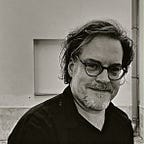Kafkaesque Conundrum
Book Review — THE PEOPLE’S ARTIST: PROKOFIEV’S SOVIET YEARS by SIMON MORRISON (Oxford University Press)
By Bradley Bambarger <2010>
The challenges facing artists in the Soviet Union are almost surreal to our minds. Composers in the 21st-century West have only audience indifference to endure. Soviet composers had to swim against a tide of shark-like bureaucrats, treacherous colleagues and Stalin himself. Artists who didn’t conform risked Siberia or worse (with their families targets, too).
One of 20th-century music’s conundrums was why Sergei Prokofiev, a successful émigré in Europe and America, chose to return to the Soviet Union, in 1936. Like his younger peer Shostakovich, Prokofiev would have to deal with the country’s brutal philistinism, bending his art to suit often baffling Stalinist diktats and ultimately having his music proscribed altogether. Yet, for all that, Prokofiev’s Soviet years yielded some of his most enduring music, from the beautifully lyrical ballets Romeo & Juliet and Cinderella to the wartime tragedies of the Sixth Symphony and Seventh Piano Sonata.
Simon Morrison, professor of music at Princeton University, was the first scholar given access to long-sealed files in the Russian State Archives. With these, the composer’s letters and other sources, Morrison has written an invaluable book, one that illuminates the motivations for Prokofiev’s Soviet return and the consequences. A careerist who would rather be treated like a state asset in Russia than deal with freelance competition with Stravinsky in the West, Prokofiev was enticed with promises of special treatment, which soon evaporated. Morrison shows how the composer’s Kafkaesque circumstances affected his music (including some maddening regime tributes), as well as how a belief in Christian Science sometimes influenced his decision-making.
Prokofiev is one of history’s greatest melodists, with the full range of his music only now taking the world stage (in large part thanks to conductor Valery Gergiev’s productions of the operas). Yet, like Picasso and Miles Davis, the composer wasn’t the most likable person — in many ways the very definition of a self-absorbed artist. Morrison details Prokofiev’s relationships, including the troubling one with the mother of his two sons (who was sent to a Siberian labor camp). But such younger performers as cellist Mstislav Rostropovich were devoted to him, and Morrison’s even-handed account is steeped in detail. It’s fascinating the way he delineates the censor-fraught process in creating such works as the opera War and Peace and Eisenstein film Ivan the Terrible, even if all the tales of ideological malfeasance can leave a reader queasy.
Yet by the end of The People’s Artist, one does realize a hard irony: that, by being deemed threatening, Prokofiev and his peers were invested with a kind of power in society that seems almost as strange today as the system they lived under.
(Originally published in the winter 2010 issue of Listen magazine.)
